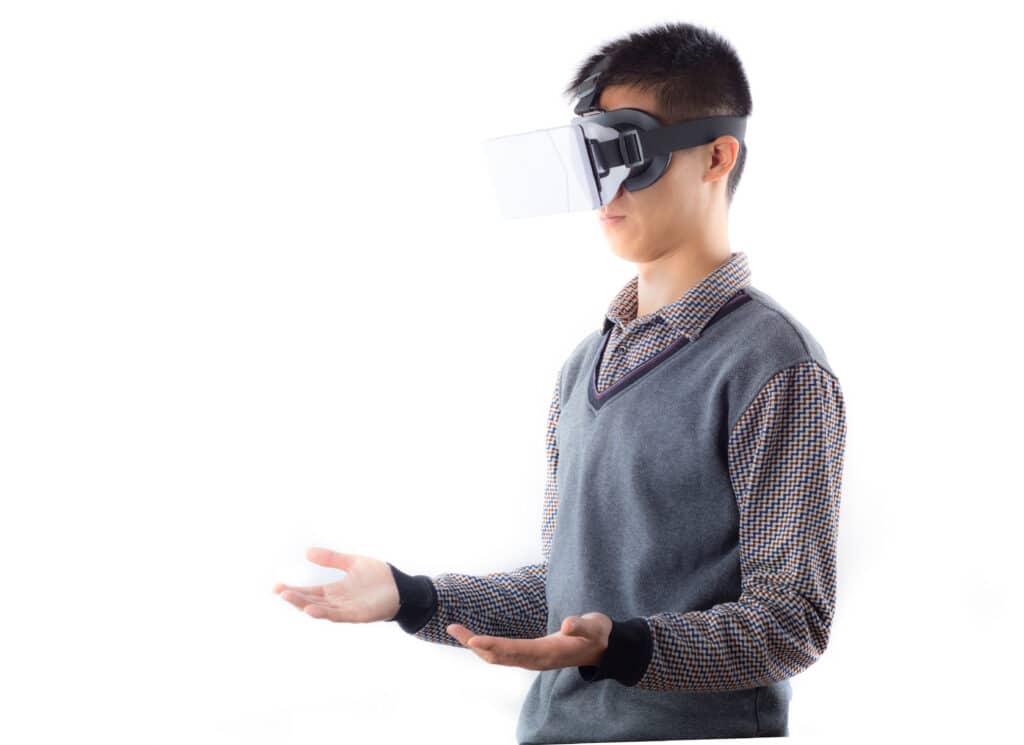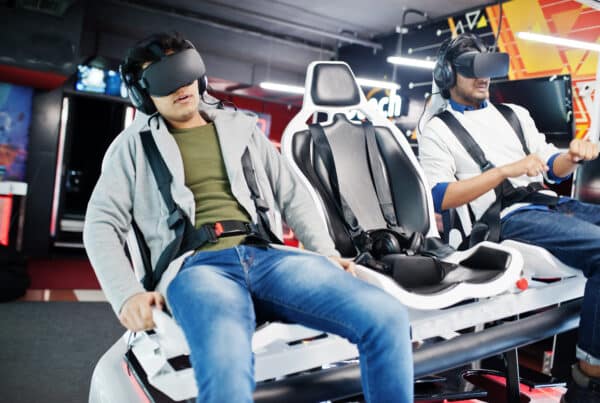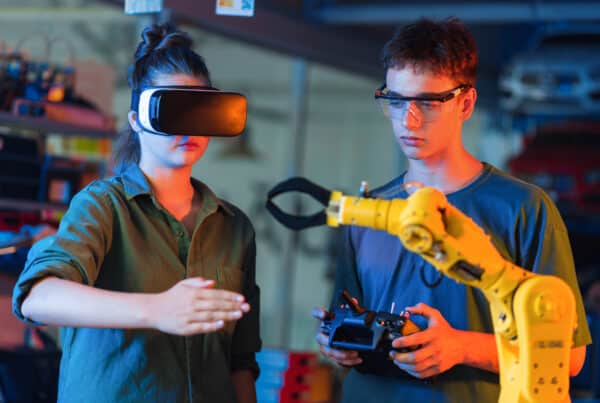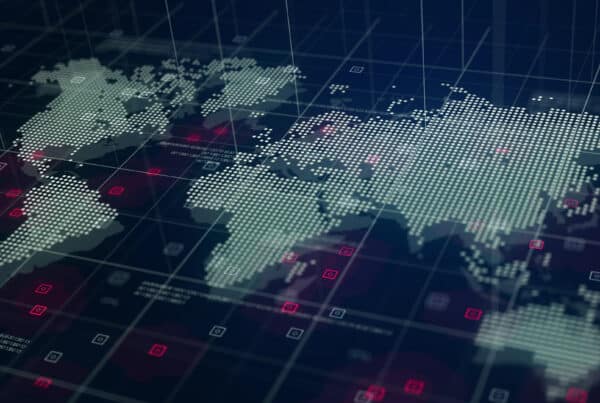
Introduction to Pose Tracking in Immersive Technologies
Hey there! Let’s dive into the world of pose tracking and see how it’s revolutionizing immersive experiences in Virtual Reality (VR) and Augmented Reality (AR). Pose tracking is a fascinating technology that captures and interprets the position and orientation of a user’s body in real-time. It’s like giving digital worlds the ability to understand and respond to our movements, making interactions with virtual environments more natural and engaging.
Pose tracking is crucial for creating immersive experiences because it bridges the gap between the real world and digital spaces. By accurately tracking our movements, it allows us to interact with virtual objects as if they were part of our physical surroundings. Imagine reaching out to grab a virtual tool in a VR workshop or dancing with a digital character in an AR game. The magic lies in the precision of pose tracking, which ensures that these interactions feel seamless and lifelike.
How Pose Tracking Works
Now, let’s explore the nuts and bolts of pose tracking technology. At its core, pose tracking relies on a combination of sensors, cameras, and machine learning algorithms to capture and interpret body movements.
Key Components
- 2D vs. 3D Pose Tracking: 2D pose tracking captures movements on a flat plane, while 3D tracking provides a more comprehensive view by capturing depth and spatial orientation. This distinction is essential for creating realistic interactions in VR and AR.
- Spatial Mapping: This involves creating a digital representation of the physical environment, allowing virtual elements to interact with real-world objects. It’s like giving the digital world a map of our surroundings.
Role of Computer Vision and AI
Computer vision and AI models play a pivotal role in detecting and predicting poses. They analyze visual data from cameras to identify key points on the body, such as joints and limbs. These points are then used to create a digital skeleton that mirrors the user’s movements. Techniques like temporal analysis and prediction models, including Kalman filters and recurrent neural networks, enhance real-time responsiveness, ensuring smooth and accurate tracking.
Applications of Pose Tracking in VR and AR
Pose tracking is making waves across various fields, transforming how we interact with digital content.
Gaming and Entertainment
In the gaming world, pose tracking enhances immersion by translating user movements into gameplay. Imagine swinging a virtual sword or dodging obstacles in a VR game. Pose tracking makes these actions feel intuitive and engaging, drawing players deeper into the game world.
Training Simulations
Industries like healthcare and the military benefit immensely from pose tracking in training simulations. By replicating real-world scenarios, pose tracking provides realistic and interactive training environments. Medical professionals can practice complex procedures, while soldiers can engage in tactical exercises, all within a safe virtual space.
Virtual Tours and Social Interaction
Pose tracking brings lifelike avatar movements to virtual meetings and tours. Imagine attending a business meeting in VR, where participants’ avatars mimic their real-world gestures and expressions. This level of realism enhances communication and social interaction, making virtual gatherings feel more personal and engaging.
Sports Analytics
In sports, pose tracking is used for training, performance analysis, and skill development. Athletes can receive real-time feedback on their movements, helping them refine techniques and improve performance. It’s like having a digital coach that analyzes every move.
Fitness Apps
Fitness apps leverage pose tracking to provide real-time feedback on body posture and movements. Whether you’re doing yoga or strength training, pose tracking ensures that exercises are performed correctly, reducing the risk of injury and enhancing workout effectiveness.
Technological Advancements Enhancing Pose Tracking
The world of pose tracking is constantly evolving, with technological advancements driving improvements in accuracy and adaptability.
Machine Learning Algorithms
Machine learning algorithms are enhancing pose tracking by improving the accuracy of movement detection and prediction. These algorithms learn from vast datasets, enabling them to adapt to different body types and movement patterns.
Advances in Sensor Technology
Innovations in sensor technology, such as Inertial Measurement Units (IMUs) and depth sensors, are elevating the quality of pose tracking. These sensors provide more precise data, reducing latency and improving the overall tracking experience.
Haptic Feedback
Augmenting pose tracking with haptic feedback adds a new layer of immersion. By providing tactile sensations, haptic feedback enhances the realism of interactions, making virtual experiences feel more tangible.
Benefits of Pose Tracking for Immersive Experiences
Pose tracking offers a host of benefits that enhance realism and user engagement in VR and AR environments.
- Realism and Engagement: By replicating physical movements in digital spaces, pose tracking creates a more immersive experience, drawing users deeper into virtual worlds.
- Accuracy and Interaction: Pose tracking increases the accuracy of interactions, reducing lag and misalignment. This precision is crucial for creating seamless and intuitive experiences.
- Safety and Training: In simulations, pose tracking provides safety benefits by allowing users to practice complex tasks in a controlled environment. This is particularly valuable in fields like healthcare and the military.
Challenges and Limitations of Pose Tracking in VR/AR
Despite its potential, pose tracking faces several challenges that need to be addressed.
Technical Constraints
Latency issues, environmental interference, and processing power requirements pose significant challenges. Ensuring real-time responsiveness and accuracy requires sophisticated technology and infrastructure.
Accuracy Challenges
Dynamic movements and occlusions can impact tracking accuracy. Ensuring consistent performance across different environments and scenarios remains a challenge.
Privacy Concerns
Continuous tracking of body movements raises privacy concerns. Balancing the benefits of pose tracking with user privacy is essential for widespread adoption.
Future Trends in Pose Tracking for Immersive Tech
The future of pose tracking is bright, with emerging technologies promising to enhance immersive experiences.
AI-Driven Pose Detection
AI-driven pose detection is set to revolutionize pose tracking by offering improved accuracy and adaptability. These advancements will enable more realistic and responsive interactions.
Integration with Other Technologies
The integration of pose tracking with other immersive technologies, such as AR glasses and Mixed Reality (MR) headsets, promises seamless experiences. This convergence will enhance user engagement and open new possibilities for interaction.
Here’s a look at some popular MR headsets and how they incorporate this technology:
- Microsoft HoloLens 2: The HoloLens 2 is a self-contained Mixed Reality headset tailored for industrial and enterprise applications. It also features a variety of enterprise-oriented software tools, including Dynamics 365 Guides and Remote Assist, designed to enhance work processes.
- Magic Leap 2: The Magic Leap 2 is a tethered headset for Mixed Reality, targeting entertainment, gaming, and providing a platform for developers. Its processor is connected to a portable Compute Pack, which not only makes it lighter but also helps in heat dissipation.
- Meta Quest Pro: Primarily a standalone Virtual Reality headset, the Meta Quest Pro also supports Mixed Reality through its pass-through functionality. It’s designed with gaming and entertainment in mind, powered by the Qualcomm Snapdragon XR2 Plus processor.
- Pico 4: The Pico 4 is another standalone VR headset, also capable of offering Mixed Reality experiences using pass-through features. It is equipped with the Qualcomm Snapdragon XR2 processor for enhanced performance.
Real-Time Responsiveness
Anticipated improvements in real-time responsiveness and motion prediction will further enhance the quality of pose tracking. These advancements will ensure smoother and more accurate interactions, enhancing the overall user experience.
Conclusion
Pose tracking is a cornerstone of immersive experiences in VR and AR, offering a bridge between the physical and digital worlds. By accurately capturing and interpreting body movements, pose tracking enhances realism, engagement, and interaction. As technology continues to evolve, the future of pose tracking holds exciting possibilities, promising to reshape how we interact with digital content in immersive environments.
Enhance your VR and AR experiences with advanced pose tracking! Contact Virtually Anywhere today to explore how this technology creates more immersive, interactive, and realistic virtual environments. Whether for gaming, training, or simulations, pose tracking takes immersion to the next level. Start creating more engaging VR and AR experiences today!
People Also Ask
- What is pose tracking, and how does it work? Pose tracking captures and interprets body movements in real-time using sensors, cameras, and machine learning algorithms.
- Why is pose tracking important in virtual reality? Pose tracking enhances realism and interaction by translating physical movements into digital spaces, creating immersive experiences.
- How does pose tracking differ from motion capture? While both capture body movements, pose tracking focuses on real-time interaction in VR/AR, whereas motion capture is often used for recording and analysis.
- What are the benefits of pose tracking in VR and AR? Pose tracking enhances realism, accuracy, and engagement, providing safety and training benefits in simulations.
- What are the main challenges with pose tracking technology? Challenges include technical constraints, accuracy issues, and privacy concerns related to continuous tracking.




